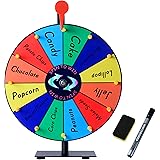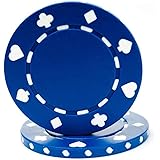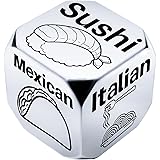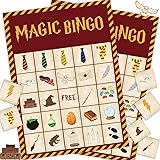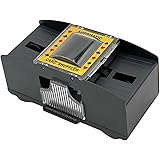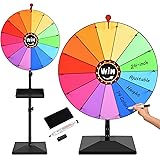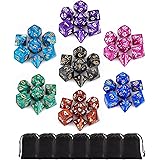Unlock the “Wheezy” Craps Strategy for Extended Play
There are legendary figures at every casino. One such character, known only as “Wheezy,” was famous for his craps strategy. This approach allowed him to play for hours. His method was so effective that dealers wished he would leave. They hoped to close the table. This innovative craps system ensured he rarely lost. It permitted extensive play on a modest bankroll. This strategy can be understood and applied by many players. It focuses on risk management and sustained engagement. The video above details this specific strategy. Here, we delve deeper into its mechanics.
Understanding the Core of the Wheezy Craps Strategy
The “Wheezy” craps strategy is centered on careful betting. Its goal is to maximize table time. Losses are minimized through strategic positioning. This system aims for consistent small gains. It avoids aggressive, high-risk wagers. A thoughtful combination of “Don’t Pass” and “Lay” bets is employed. “Place” bets on the 4 and 10 also play a key role. This balanced approach is considered essential. It sets the foundation for sustained craps gameplay.
1. Initial Setup: The Don’t Pass Line
The Wheezy strategy begins with a precise move. A $30 wager is placed on the Don’t Pass line. This is done before the come-out roll. This bet positions the player against the shooter. The shooter hopes for a point to be established. If a 7 or 11 is rolled, the Don’t Pass bet is lost. Should a 2 or 3 appear, the bet is won. A 12 results in a push. This initial action is a critical component of the strategy.
The primary aim of this opening bet is specific. It seeks to establish a point. The point must be a number other than 2, 3, 7, 11, or 12. Once a point is established, the game progresses. This setup forms the defensive core. The Wheezy craps strategy is built upon this initial decision. It provides an immediate edge against the casino.
2. Adapting to the Point: Lay and Place Bets
Once a point is set, the strategy evolves. $15 is placed on both the 4 and the 10. These are treated as Place bets. This move generates potential payouts if these numbers are rolled. Concurrently, a $30 Lay bet is made. This is placed on the specific point number. If the point is a 5 or 9, the Lay bet pays $20. If a 6 or 8 is the point, a $25 payout is expected. These Lay bets effectively work as insurance. They protect against the point being hit.
The interaction of these bets is very important. If the 4 or 10 hits, a payout of $27 or $29 is received. This depends on the casino’s specific odds. Upon this win, the Lay bet on the point is removed. The Place bets on the 4 and 10 remain. This calculated adjustment locks in gains. It reduces exposure to further risk. The strategy is dynamic, requiring awareness of the game state.
3. Managing Outcomes: Sevens and Point Hits
A crucial aspect of craps is the seven-out. If a 7 is rolled after a point is established, the Don’t Pass bet wins. Additionally, the Place bets on 4 and 10 will also win. This scenario yields a profit of $20 to $25. This gain is secured immediately. The Lay bet, if still active, would be lost. However, the Don’t Pass win typically offsets this. This favorable outcome is often sought. It demonstrates the protective nature of the strategy.
What if the point number is hit before a 7? This results in a loss for the Don’t Pass bet. The Lay bet would also win in this situation. However, the Place bets on 4 and 10 would remain. This specific outcome typically means a smaller net loss. For instance, a $10 loss might be incurred. The system is designed to absorb these small losses. It prepares for subsequent opportunities. The overall objective is not to win every single roll. It is to manage fluctuations and extend play.
Strategic Bankroll and Durability
The “Wheezy” strategy is known for its durability. A $300 buy-in is suggested. This amount allows for extended play. The system can be adapted to various table minimums. For instance, Wheezy often played at $5 tables. He structured his bets as if playing a $15 game. This shows flexibility in application. The focus is on disciplined betting. It is not about the initial table stake itself.
Extended play is the core benefit. This strategy helps players stay at the table longer. It avoids quick bust-outs. Small, consistent wins are preferred. High variance bets are mostly avoided. This method appeals to players who enjoy the game. They value endurance over immediate, massive profits. The strategy’s long-term viability is often discussed. It is considered a strong approach for mitigating risk.
Psychological Edge: Playing for Time
The “Wheezy” craps strategy offers a psychological advantage. Players are less stressed about individual rolls. They understand the system’s inherent resilience. The strategy shifts focus. It moves from big wins to continuous action. This reduces emotional swings. Maintaining composure is essential at the craps table. A calm approach can improve decision-making. This system provides a framework for such a mindset.
The anecdotal history of “Wheezy” highlights this. He was often described as unflappable. His consistent presence at the tables was notable. Dealers acknowledged his ability to persist. His strategy was difficult to beat quickly. This allowed him to remain engaged for prolonged periods. The method fosters patience and discipline. These traits are highly valued in casino gambling.
Advanced Considerations and Variations
While the core strategy is defined, variations exist. Some players might adjust the bet sizing. This could be done to match bankroll fluctuations. Others might consider different odds. These may be offered at various casinos. The fundamental principles remain constant. The balance of offensive and defensive bets is maintained. Each player’s comfort level should guide these decisions. A careful, measured approach is always recommended.
Probability analysis supports the strategy’s design. The 4 and 10 are outer numbers. They hit less frequently than inside numbers. However, their payouts are good when they do. Laying the point directly counters that number. This hedges against the shooter. The combined effect creates a neutral to slightly positive expectation for extended play. This innovative craps strategy truly emphasizes risk aversion. It prioritizes table time over chasing large, unlikely payouts. A $57 profit from a $300 buy-in is often realized. This demonstrates its potential for consistent, modest gains.


